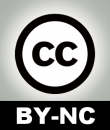Summary
Addiction, now often referred to as substance use disorder (SUD), is a complex and chronic medical disease characterized by a compulsive desire to seek out and use a substance, or engage in a behavior, despite harmful consequences. It’s crucial to understand that addiction is not a lack of willpower or a moral failing.
OnAir Post: Addiction
About
Source: Gemini AI Overview
Causes of addiction
- Genetic Factors
Inherited genes can account for approximately 40% to 60% of an individual’s vulnerability to developing an addiction. - Environmental Factors
A person’s surroundings, including family dynamics, peer influences, socioeconomic status, and access to education and employment opportunities, all play a role in their likelihood of substance use and progression to addiction. - Early Exposure
Initiating substance use at a younger age is a significant risk factor, potentially causing harmful effects on the developing brain and increasing the chance of developing addiction. - Mental Health Conditions
Co-occurring mental health conditions like depression, anxiety, or PTSD can significantly increase the risk of addiction, as individuals may attempt to self-medicate with substances to cope with their symptoms. - Method of Substance Administration
Methods like smoking or injecting drugs can increase the addictive potential due to the rapid onset of a powerful but short-lived high.
Types of addiction
- Substance Use Disorders (SUDs)
This involves the compulsive use of various substances including alcohol, marijuana, opioids (prescription or illicit), stimulants, and nicotine. - Behavioral Addictions
While the diagnostic criteria in the DSM-5 currently recognize only gambling disorder as a diagnosable behavioral addiction, other activities like eating, exercising, shopping, sex, and internet use can become addictive and negatively impact daily functioning.
Signs and symptoms
- Compulsive craving and intense focus on the substance or activity.
- Loss of control over the amount or frequency of substance use or engagement in the activity.
- Continued use despite experiencing negative consequences (health problems, relationship issues, financial difficulties).
- Developing a tolerance and needing increasing amounts of the substance to achieve the desired effect.
- Experiencing withdrawal symptoms, both physical and emotional, when attempting to stop or reduce use.
Challenges
Addiction, or substance use disorder (SUD), presents a complex web of challenges impacting individuals, families, and society as a whole.
Initial Source for content: Gemini AI Overview 7/16/25
[Enter your questions, feedback & content (e.g. blog posts, Google Slide or Word docs, YouTube videos) on the key issues and challenges related to this post in the “Comment” section below. Post curators will review your comments & content and decide where and how to include it in this section.]
1. Denial and lack of awareness
- Many individuals with addiction are in denial about the severity of their substance use and may resist seeking help, believing they can quit on their own or that outside factors are to blame.
- Limited knowledge about available treatment options and resources can also be a barrier to seeking help.
2. Stigma and discrimination
- Societal Stigma
Addiction is often misunderstood as a moral failing or a sign of weakness, leading to judgment, negative stereotypes, and discrimination against individuals with SUDs. - Self-Stigma
Individuals internalize these negative beliefs, leading to feelings of shame and worthlessness, which can further hinder them from seeking treatment or support. - Structural Stigma
Discriminatory laws, policies, and practices create barriers to treatment access and support services.
3. Accessibility and financial limitations
- Treatment Costs
The high cost of treatment, coupled with insufficient insurance coverage, poses a significant barrier for many individuals seeking help. - Geographic Limitations
Limited availability of treatment facilities, particularly in rural areas, and transportation challenges can hinder access to care. - Waiting Lists
Long waiting lists for services further exacerbate the problem of access.
4. Withdrawal symptoms and relapse risk
- Fear of withdrawal symptoms can deter individuals from seeking or completing treatment.
- Relapse is a common challenge during recovery and can be triggered by stress, cravings, or high-risk situations.
- Co-occurring mental health conditions can also pose hurdles to sobriety.
5. Social support and relationship struggles
- Lack of support and a stable environment can make it harder to maintain sobriety.
- Addiction strains family relationships, leading to conflict and distress.
- Family members may enable the addiction or struggle with codependency.
6. Specific population challenges
- Parents, specifically mothers, may face barriers like childcare needs and greater stigma.
- Racial and ethnic minorities can experience discrimination in healthcare settings and face greater criminal justice consequences.
Innovations
The field of addiction research is rapidly evolving, driven by scientific discoveries that offer new hope for individuals struggling with substance use disorders.
Initial Source for content: Gemini AI Overview 7/16/25
[Enter your questions, feedback & content (e.g. blog posts, Google Slide or Word docs, YouTube videos) on innovative research related to this post in the “Comment” section below. Post curators will review your comments & content and decide where and how to include it in this section.]
- Neural Circuit Mapping & Biomarkers: Researchers are using advanced techniques like neuromodulation and neuroimaging to identify specific brain circuit alterations associated with addiction, including changes in areas like the thalamus and medial temporal lobe in opioid use disorder.
- Genetic Factors: Multiple genetic markers influencing dopamine regulation have been identified as potentially contributing to addiction susceptibility.
- Neurobiology of Addiction: Studies reveal how drugs of abuse can “hijack” the brain’s reward system, impacting neural plasticity and even potentially altering how neurons process natural rewards like food and water, according to The Rockefeller University.
- Epigenetics: Research focuses on how epigenetics, the modification of gene expression without altering the DNA sequence, could offer a pathway to reversing the brain changes caused by chronic substance use.
- Neuromodulation Techniques: These non-invasive or minimally invasive techniques stimulate specific brain areas to reduce cravings and withdrawal symptoms. Examples include Transcranial Magnetic Stimulation (TMS), Deep Brain Stimulation (DBS) being explored for various addictions, and Focused Ultrasound.
- Pharmacological Advancements: Novel medications are in development to target cravings and withdrawal for substances like cannabis and opioids. Addiction vaccines aiming to prevent substances from reaching the brain are in clinical trials for cocaine and nicotine. Additionally, GLP-1 medications, used for diabetes and obesity, show potential in reducing cravings by influencing brain reward pathways.
- Behavioral Therapies: Innovative approaches include Virtual Reality Therapy (VRT) for practicing coping skills, mindfulness-based treatments for managing cravings and stress, and advancements in Cognitive Behavioral Therapy (CBT) like virtual reality and dual diagnosis treatment. Contingency management, which rewards positive behavior, is effective, particularly for stimulant use disorders, and Motivational Interviewing helps individuals strengthen their motivation for recovery.
- Personalized Treatment Plans: There is a growing focus on tailoring interventions based on individual needs and genetic predispositions.
- Holistic Approaches: Addressing the whole person, including physical, emotional, mental, and spiritual well-being, is gaining traction.
- Telehealth and Virtual Therapy: These technologies expand access to treatment, especially in remote areas or for those with mobility issues.
- Digital Therapeutics and Mobile Apps: These tools offer features like mood tracking, medication reminders, and connections to support groups. Some apps utilize AI for personalized recovery plans.
- Wearable Devices and Monitoring: Wearables can track health metrics, detect signs of potential relapse, and provide real-time data to patients and providers.
- Artificial Intelligence (AI) and Machine Learning: AI can analyze data to predict relapse risks, generate personalized recovery plans, and facilitate chatbot therapy sessions.
- Online Recovery Communities: These platforms provide a sense of community and support through forums and support groups.
- Social Determinants of Health: Recognizing and addressing factors like housing, income, education, and social connections are crucial for long-term recovery.
- Trauma-Informed Care: Acknowledging the strong link between trauma and addiction is important for delivering treatment with empathy.
- Integrated Care: Treating co-occurring mental health and substance use disorders concurrently leads to higher success rates.
- Harm Reduction Strategies: Practices like needle exchange programs, fentanyl test strips, and naloxone distribution are increasingly accepted as life-saving tools.
Projects
Addiction treatment is a continually evolving field, with current and future initiatives focusing on increasing access to care, developing more personalized treatment approaches, leveraging technology, and exploring novel therapeutic strategies.
Initial Source for content: Gemini AI Overview 7/16/25
[Enter your questions, feedback & content (e.g. blog posts, Google Slide or Word docs, YouTube videos) on current and future projects implementing solutions to this post challenges in the “Comment” section below. Post curators will review your comments & content and decide where and how to include it in this section.]
Current projects
- Technology-assisted interventions
- Telehealth and virtual therapy
Platforms enable individuals to access counseling, therapy, and medical support remotely, increasing accessibility, particularly for those in remote areas or facing stigma. - Mobile apps
Recovery apps provide 24/7 support through features like craving and trigger tracking, AI-driven relapse prevention strategies, and instant peer support connections. - Virtual reality therapy
Used for “cue exposure therapy,” simulating high-risk situations in a controlled environment to help individuals develop coping mechanisms and manage triggers. - Wearable biosensors
Devices like chest-worn biosensors and smartwatches can monitor physiological markers, detect signs of overdose, and alert first responders or designated contacts.
- Telehealth and virtual therapy
- Harm Reduction Strategies
- Naloxone distribution and training
Providing access to naloxone to reverse opioid overdoses and educating individuals on its proper use. - Syringe services programs
Offer sterile equipment and support services to prevent the transmission of infectious diseases and link individuals to treatment and social services.
- Naloxone distribution and training
- Integrated care models
- Combining mental health, physical health, and addiction services under one roof to improve coordination of care and patient outcomes.
- Medication-Assisted Treatment (MAT)
- Utilizing FDA-approved medications like methadone, buprenorphine, and naltrexone in conjunction with behavioral therapies to manage withdrawal, reduce cravings, and prevent relapse, particularly for opioid use disorder.
Future initiatives
- Novel medications and immunotherapies
- Research into new medications targeting stimulant use disorders and developing anti-opioid vaccines that reduce euphoric effects and protect against overdose.
- Personalized treatment approaches
- Leveraging genetic and biomarker testing, along with AI and machine learning, to tailor treatment plans to individuals’ unique needs and predict relapse risks.
- Expanded access to treatment
- Promoting policies that reduce barriers to treatment, increase the number of practitioners prescribing medications for opioid use disorder, and ensure equitable access to care, including for underserved populations.
- Understanding drug use and addiction
- NIDA’s “Unlocking Insights” Challenge encourages researchers to analyze data from the All of Us Research Program to uncover insights into drug use, misuse, and addiction.
- Researching specific populations
- Ongoing studies are modifying existing interventions to address the needs of high-risk groups, including American Indian/Alaska Native youth and young adults experiencing homelessness.
- Substance Abuse and Mental Health Services Administration (SAMHSA)
A federal agency focused on public health efforts, providing leadership and resources for prevention, treatment, and recovery services, including grant programs and harm reduction initiatives. - National Institutes of Health (NIH) and National Institute on Drug Abuse (NIDA)
Dedicated to researching and understanding addiction, developing and testing new treatments and prevention approaches, and informing the public. - Non-profit organizations
Organizations like Shatterproof, Hazelden Betty Ford Foundation, and Faces and Voices of Recovery advocate for policy changes, provide educational resources, and offer direct support to individuals and families affected by addiction.


